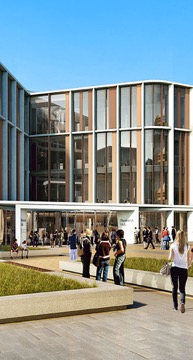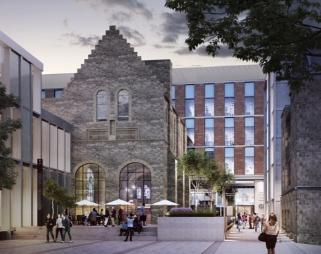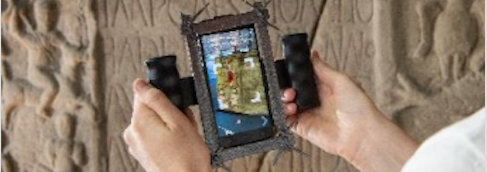Advanced Research Centre: VR/AR For All
Published: 25 January 2022
At the heart of the new Advanced Research Centre on campus is a space dedicated for Virtual Reality and Augmented Reality (VR/AR) research, also known as ARC XR. Not just for the University, this is a shared resource for all.
 The Advanced Research Centre opens in Summer 2022, and right at the heart of it is a space dedicated for Virtual Reality and Augmented Reality (VR/AR) research, also known as ARC XR. This is not a space for a specific project team or subject area, but as Dr Neil McDonnell, Head of the ARC XR Board of Operations, states, “a shared resource for all.”
The Advanced Research Centre opens in Summer 2022, and right at the heart of it is a space dedicated for Virtual Reality and Augmented Reality (VR/AR) research, also known as ARC XR. This is not a space for a specific project team or subject area, but as Dr Neil McDonnell, Head of the ARC XR Board of Operations, states, “a shared resource for all.”
An open space for large-scale XR projects
The ARC XR space will be one of the UK’s largest VR/XR Suites; at 6m x 18m, it is almost the same size as a tennis court. Though the full space can be used for large-scale projects, it can also be divided into smaller sections using sliding partition walls. These sections can then be operated independently and simultaneously by multiple users.
The XR space is maximally plain, with no windows, ceiling tiles, or permanent furniture. This will enable the use of backdrops and greenscreens, as well as the maximum range of movement and height for the use of large-scale props. More importantly, this will prevent any issues which can be caused by light and reflective surfaces. ARC XR also features a recess which will house the computing equipment required to power virtual and augmented reality projects. However, it is hoped that it will also be possible to record and view the action taking place inside ARC XR remotely in one of the meeting rooms adjacent to the space.
State-of-the-art equipment
ARC XR will be able to host large-scale, group based XR projects. Though users of ARC XR may wish to bring their own equipment, the space will have a powerful wireless access and be stocked with state-of-the-art equipment. This includes access to VR and AR headsets, as well as several gaming laptops with powerful graphics. It is likely that there will also be up to 18 workstations housing gaming PCs. There are already ambitions for ARC XR’s future; additional funding to enable the maintenance and upgrading of the computing equipment and headsets required, and a system in which funded projects can later donate the equipment bought specifically for their use.
Digital Cultural Heritage
VR and AR technology allow access to virtual objects and environments that would be otherwise impossible. This opens up the possibility for researchers, students, curators and the general public to engage with cultural heritage in new ways. Digital versions of artefacts, manuscripts, sites of interest, or even historical events can be explored and interacted with using VR and AR technology.
ARC XR will be made available not just to academics in Glasgow, but colleagues at other universities and partner institutions too. Collaborations with the likes of museums, schools, or businesses is welcome and encouraged.
 Supporting ARC XR Use
Supporting ARC XR Use
ARC XR is supported by a Board of Operations, comprising of representatives from each of the Colleges able to provide advice and guidance. Dr McDonnell hopes that there will be full technical and onboarding support in the future, with training for staff and postgraduate researchers, as well as a network of industry partners and collaborators.
Though ARC XR is not in use yet, there is already a process in place for booking and using ARC XR. Users can develop their ideas with their relevant College Representative, who can also connect them to appropriate academic and industry partners, before finalising their space booking.
Do you have an idea or proposal for an XR project, or a query about ARC XR? Contact Fraser Rowan to find out how you can get involved.
First published: 25 January 2022


